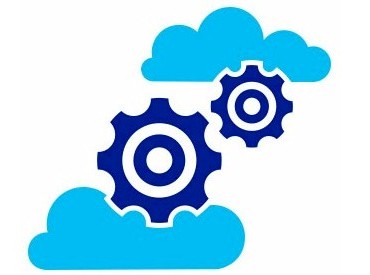Cloud Price War Rages As Microsoft Cuts Azure Storage Prices

Microsoft promised last year it would compete head-to-head with Amazon Web Services for compute and storage capacity on its public cloud, and it has made good on that promise by cutting prices for storage in the wake of a price cut last week by AWS.
As is typical these days, Microsoft made the announcement via a blog posting, but interestingly the price cut is not effective immediately but rather on March 13. The price cuts will be made on Microsoft's Block Blobs Storage and Disks/Page Blobs Storage, which are roughly analogous to the S3 object storage and EBS block storage sold by Amazon. The precise numbers were not available yet, but Steven Martin, general manager for strategy and planning for Microsoft's Windows Azure public cloud, said that unlike Amazon, Microsoft was making its cloud storage price cuts available worldwide and would therefore undercut AWS pricing in many regions of the globe even as it matches the price cuts in the core US East region that is the touchstone for AWS and increasingly all clouds.
Microsoft said that it was cutting prices on Azure storage by up to 20 percent to match Amazon's price and added that it would cut the price of its locally redundant Disks/Page Blobs storage by up to 28 percent and was similarly cutting the charges for performing transactions against Azure storage by 50 percent. As the name suggests, the locally redundant storage makes multiple copies of data within a single region; it has a 99.9 percent availability service level agreement. This storage has a tiered pricing scheme, with the first 1 TB costing 7 cents per GB per month. As the size of the storage capacity grows, the cost per unit of capacity falls, thus:
Microsoft also has a variant of its storage available that makes multiple replicas of data within one region and then replicates the data out to another region. This geographically redundant storage is currently in tech preview and does not yet have read access to the replicated data in the remote region. Given this, Microsoft is charging slightly less for the preview service than it will when it goes live in March, as you can see from the table above. When it does become available, Microsoft will offer a 99.9 percent available SLA for writes and a 99.99 percent available SLA for reads, the latter of which is made possible from having the data parked out in the remote region. Microsoft will put the data in a region that is at least 400 miles away from the primary region customers are operating in.
As you can see from the table, dispersing the data and boosting the read SLA boosts the cost significantly. (The pricing is anything but linear.) The transaction price on Azure storage is for a read or a write operation to any capacity, and Microsoft charges a penny for each bundle of 100,000 I/O operations.
"While we know that price really matters for these commodity services, we also know that it is not just a price decision, it's also about great performance, reliability and scalability," Martin wrote. "We are deeply committed to maintaining market leading price-for-performance and providing best in class reliability / scalability."
As an example, Martin said that the current local storage with geographic redundancy costs 9.5 cents per GB per month. To get the same level of availability on AWS, customers have to pay for EBS standard volumes, which cost 5 cents per GB per month and then the EBS-to-S3 snapshot service, which costs another 9.5 cents per GB per month. Martin's math said that, when you have a certain amount of I/O transactions against the storage (which he did not define), it was 34 percent more expensive to buy the storage on AWS than on Azure.
There's nothing that customers like better than a price war between rivals that are fiercely competing for business. It is good for everybody – except system makers and component suppliers, of course. And at the moment, Microsoft, Google, and AWS seem bent on shooting at each other from their respective clouds; Rackspace Hosting and now IBM/SoftLayer could get caught in the crossfire.
Microsoft and Google have deep pockets and can use their cash and leverage with system and storage component makers and suppliers to get the cheapest parts. Rackspace is moving to Open Compute designs from Quanta and WiWynn to get its costs down for systems, storage, and datacenters, while SoftLayer has relied on SuperMicro for its machines. Google and Microsoft do not have to profit immediately from their clouds, IBM can decide it needs to or not at some level but has put itself under intense profit pressure because of earnings promises it has made to Wall Street out to 2015. Amazon, the retailer, has shown no worry about ever having sizable profits, and Wall Street still loves it; AWS may or may not be profitable and it would be truly funny is the cloud is helping prop up the retailer's profits. Rackspace has little choice but to try to offer fanatical support and what it perceives as a premium service for its cloud. It cannot invest in its cloud build out at a level that Microsoft, Google, Amazon can do and that IBM may yet try to match.











